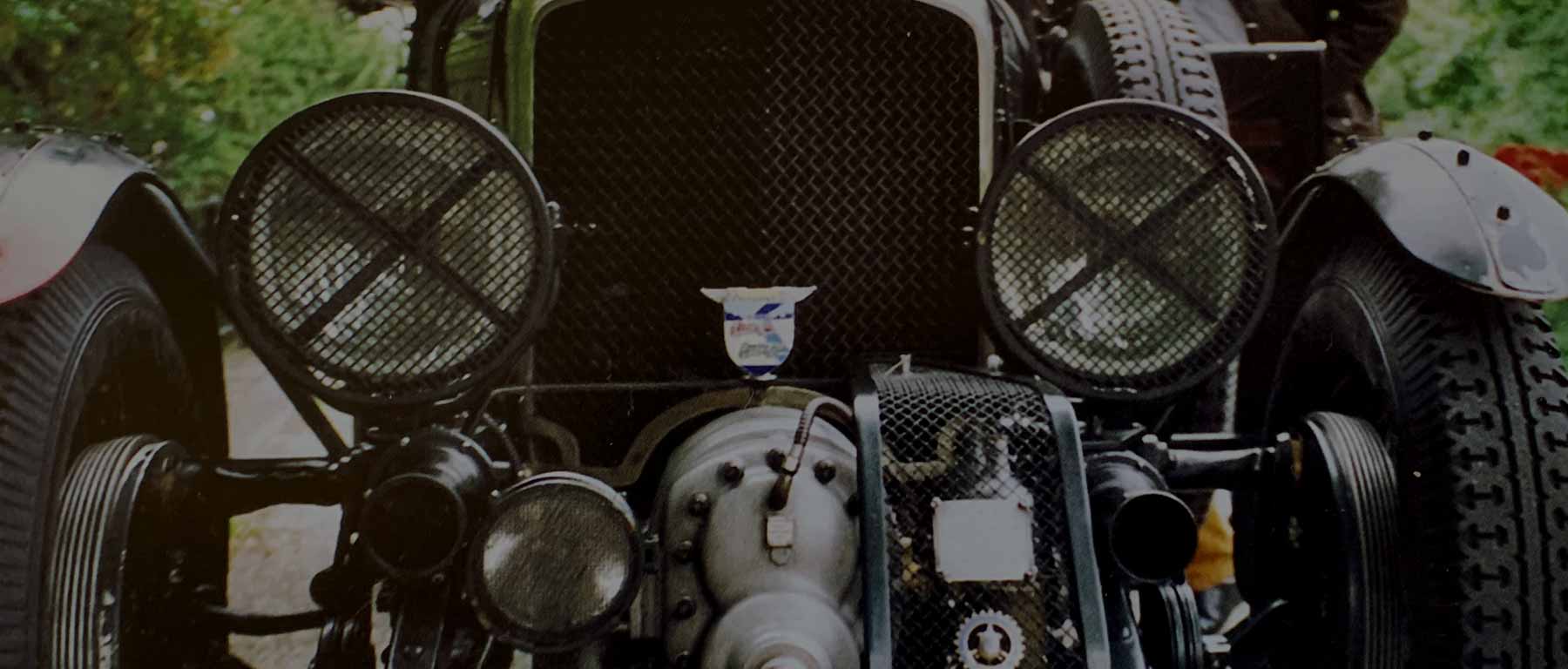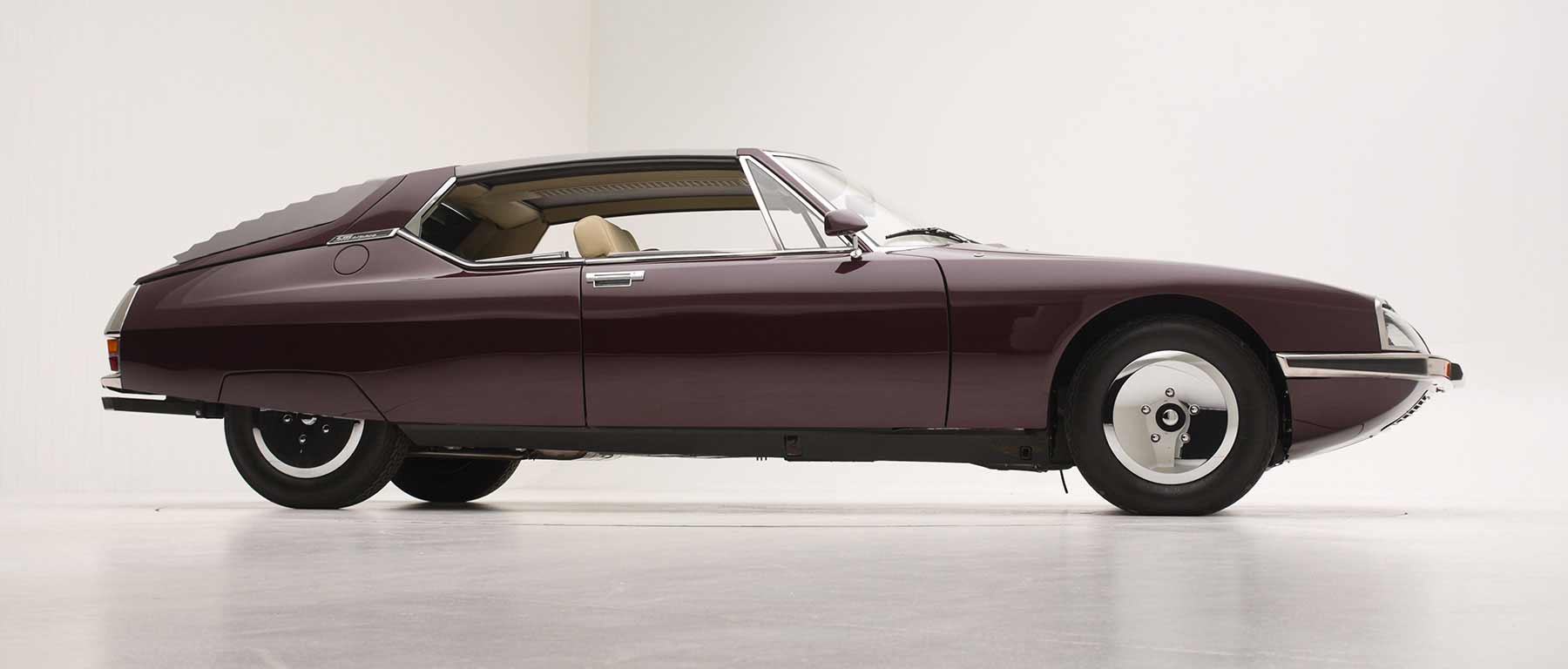
Blower in the Rain
Michael Kliebenstein recalls his favourite drive in a 1931 4½-litre ‘Blower’ Bentley.
The cockpits of 1920s and 1930s race cars have a very simple authenticity generally not found in cars of later eras. Designed in a strictly pragmatic way, with function and efficiency of use the only considerations, they were never intended to be objects of visual appeal. Yet today they’re often rightly considered examples of automotive art. None more so than the cockpit of the 1930 Bentley 4½-litre ‘Blower’, the most famous race car of the Bentley Boys-era.

Above: Despite an array of gauges, knobs and switches, nothing is superfluous, and though it was never designed to be a thing of visual beauty, to most, it is a work of automotive art.
Driving a genuine Blower in anger is about syncing your organic movement with the mechanical precision that the car demands. Just doing it brings reward, but doing it well takes the experience to another level.
I am very fortunate to have had that opportunity many times thanks to Robert Fink, my friend and owner of GY 7846. Robert’s been generous enough to let me take his car, chassis MS 3950 – no. 50 of the 50 customer Blowers produced, on numerous occasions. Great drives I recall include trips to St. Moritz, to Salzburg, through the Alps, to the Nürburgring, around Goodwood and even through central London’s heavy traffic. It is an amazing car, and still on its original engine and supercharger.

Above: Michael’s smile proves that driving a supercharged ‘Blower’ Bentley is one of driving’s greatest thrills.One drive in particular stands out. Whenever I remember that day, I can still feel the pulsing heart of the revving blower vibrating through every bone of my body. It was a six-hour drive in absolutely appalling weather conditions on the German Autobahn from Munich to Mannheim. I’d driven in the wet before, but never like in torrential rain like this. Water was flowing over the instruments; streaming down my face, and filling the deep pockets of my Barbour coat.I thought, ‘Good heavens, if this continues for another hour I will drown!’ The dark green monster carried on like there was no tomorrow. It wasn’t fazed so I pressed on, accelerating to 90mph and held it there keeping pace with the modern traffic in the left lane. At that speed the rain was stinging my face, but ‘Bentley Boys’ are supposed to be made of sterner stuff, so I continued the journey as if nothing had changed.The quivering hands of the wet and foggy dials were almost unreadable beneath the stream of water but I could just make out that the pressure gauge was showing a little over 3psi. The water temperature however, had dropped to a very low 65 degrees centigrade, which is always bad news with a Blower Bentley. One of the pistons might let go, so I eased off the throttle, slowing to around 60mph and ran with a richer mixture with the engine spinning at 1,800rpm. It’s very easy to run a Blower too lean in the cold, with catastrophic results.

Above: At anything above 60mph the instruments begin a wild dance. Oil drip feeders (below supercharger pressure gauge) control lubrication of the compressor bearing.
Not long after, I found myself stuck behind a long line of trucks kicking up a huge amount of spray. A fountain of water entered the cockpit drenching my trousers and running into my shoes. I could barely see through the windscreen so I decided to give the Bentley full stick and speed up to 90mph again to pass the trucks. The instruments resumed their wild dance. I allowed the two oil feeders for the compressor bearings a few more drops per minute – two half-turns. The noise of the engine was deafening. My brain said, ‘enough’, but I had no time to listen to it as a sharp downhill corner on the motorway appeared. It was hard work to keep the bucking monster on the wet road and a battle to slow it too. A Blower is a very heavy car after all. Even under gentle braking, the Bentley snaked around. My fingers felt numb from the cold. There was no time to look at the instruments. Assuming the brake drums were full of water, I used a little bit of the outside handbrake to carefully reduce speed. Thankfully, that worked well and we were soon going uphill again. I was also relieved to see that the water temperature had risen to a healthier 85 degrees centigrade near Stuttgart. ‘Perfect,’ I thought, ‘everything is going to be fine’.
To experience a long, hard drive in an original Blower Bentley is the thrill of a lifetime, even in the pouring rain.
Other articles by Michael
Books by Michael






1 comment
A story that makes you think you’re sitting on the sofa soaked after reading it ! A Great Story, thanks!
christian
Leave a comment
This site is protected by hCaptcha and the hCaptcha Privacy Policy and Terms of Service apply.